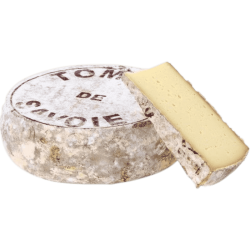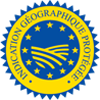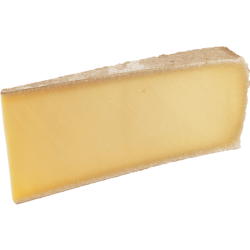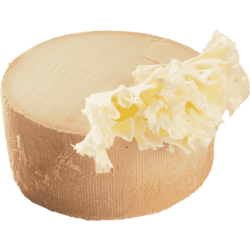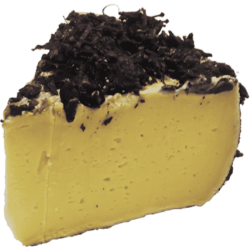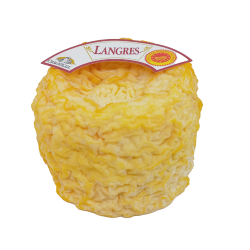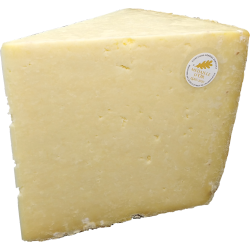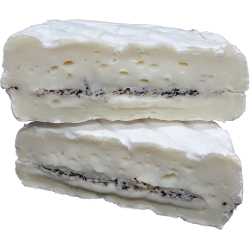
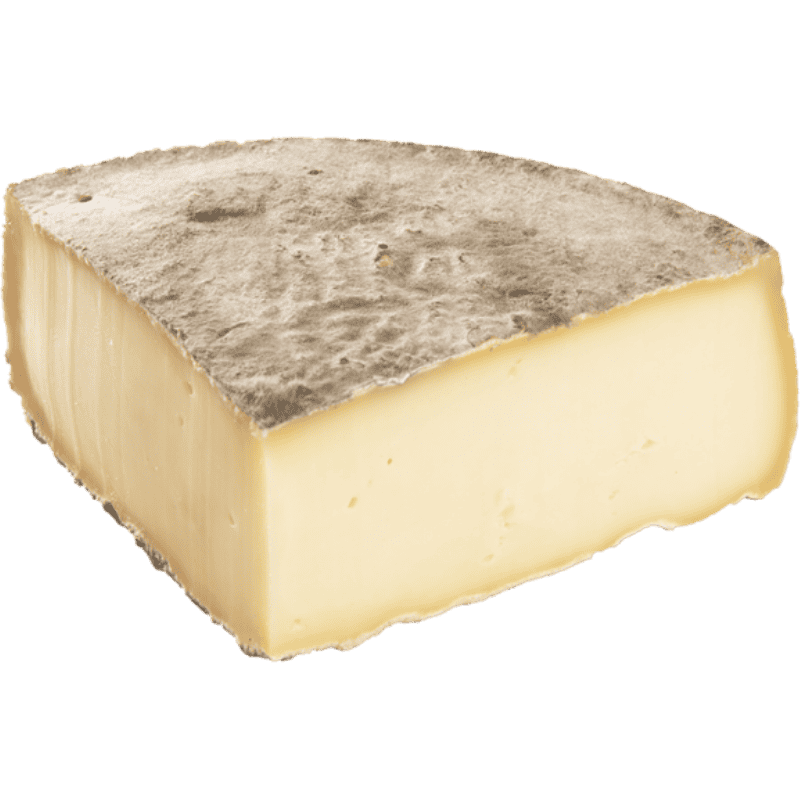
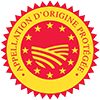






Saint-Nectaire is an appellation of origin for a French cheese made from raw cow's milk and produced in the micro-region of Monts-Dore, a country that straddles the Cantal and Puy-de-Dôme departments in France.
The appellation of origin was first recognized at the national level in 1955, when the cheese was exclusively farmhouse, and in 1964, when it was granted the appellation of controlled origin (AOC).
Dairies and the dairy industry were allowed to produce Saint-Nectaire cheese and, in order to distinctly identify the two productions which from then on were side by side, the cheeses were marked with an oval green casein plate for the farm cheeses and a square one for the dairy and industrial ones.In 1996, by means of a Protected Designation of Origin (PDO), the protection was extended to the whole European Union
The new appellation petit-saint-nectaire concerning cheeses of 600 grams was included in the specifications to adapt to the market. A peasant cheese, often made by women, Saint-Nectaire was called "rye cheese" until the 17th century because it was matured on the straw of this cereal.
It is the smoothness of its paste and its nutty taste that made its fame. Introduced at the court of Louis XIV by the Marshal of France Henri de La Ferté-Senneterre (1600-1681), Saint-Nectaire was favored by the Sun King. Its reputation was made when Legrand d'Aussy wrote in 1768, in the account of his trip to Auvergne: "If you want to enjoy it, it is always Saint-Nectaire that you will find". The Saint-Nectaire farm cheese is always made with raw milk, and is produced twice a day, just after each milking.
Other Saint-Nectaire cheeses can be made from blended, thermized or pasteurized milk. 13 to 14 liters of cow's milk are needed for one cheese. After each milking for the farmer, and after pasteurization of the harvested milk for the dairyman and the industrialist, the renneted milk is curdled for 30 to 45 minutes.
The curd obtained is then curdled with a lyre to obtain grains the size of wheat kernels. Then comes the brewing stage which allows the grains to firm up. Ripening in a natural cellar of Saint-Nectaire cheeses.the next step is the collection :
the grains fall to the bottom of the vat and are grouped together with the help of the palm.Then, the operator draws off the whey which represents about 80% of the quantity of the original milk. This whey is then fed to the cows, spread in the meadows or collected by the dairies.
Once the curds have been drained, they are pressed into molds with the help of a machine.
The resulting tome is wrapped in a cloth, equipped with an oval or square green casein plate, and salted (brine). It is then placed under a press for 12 to 24 hours, the cheese is then unwrapped and put in a cold room at 10°C with 40 to 60% hydrometry for the two-day drying stage.
Once the production process is complete, the farmers and dairies ripen the cheeses or sell them to ripeners. The ripening process can then begin for, according to the specifications, a minimum of 28 days (reduced to 21 days for Petit-Saint-Nectaire).
In fact, on average, it is five to six weeks for farmhouse Saint-Nectaire, and can last up to two or three months. During this period, the cheeses are washed several times with salted water and then regularly turned over to obtain the orange-gray bloomy rind specific to Saint-Nectaire.
Data sheet
- MILK
- raw milk cow's milk
- TEXTURE
- Flexible
- ALLERGEN
- Milk
- GRASSE MATERIAL
- 28 %
- PROVENANCE
- Puy-de-Dôme
- SEASON
- Toute l'année
- SUGGESTED WINE
- Château Neuf du Pape
- INTENSITY
- médium
- APPELLATION
- AOC depuis 1964
- REWARD
- Gold medal 2017
Specific References
- EAN13
- 3871860440001
St Nectaire farmhouse PDO
The St Nectaire farm cheese is creamy and smooth, with a taste of the land.
Cheese made from raw cow's milk.






